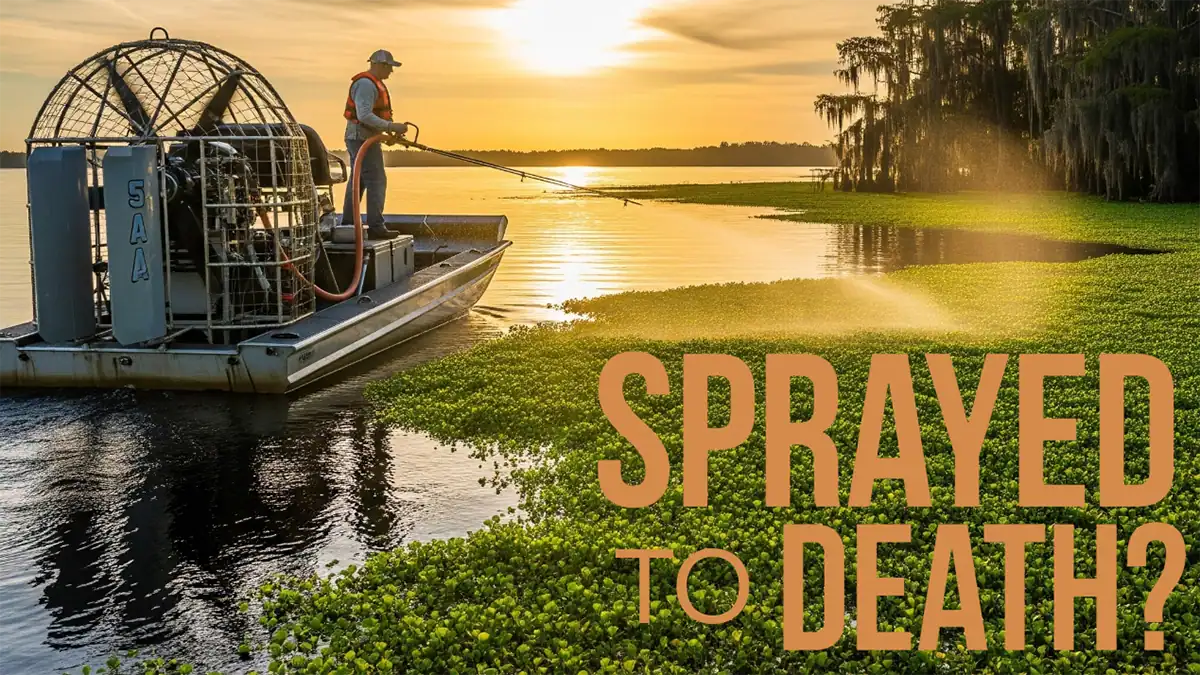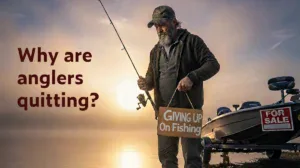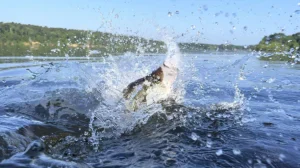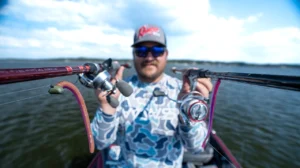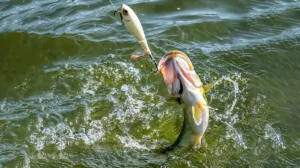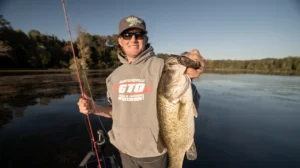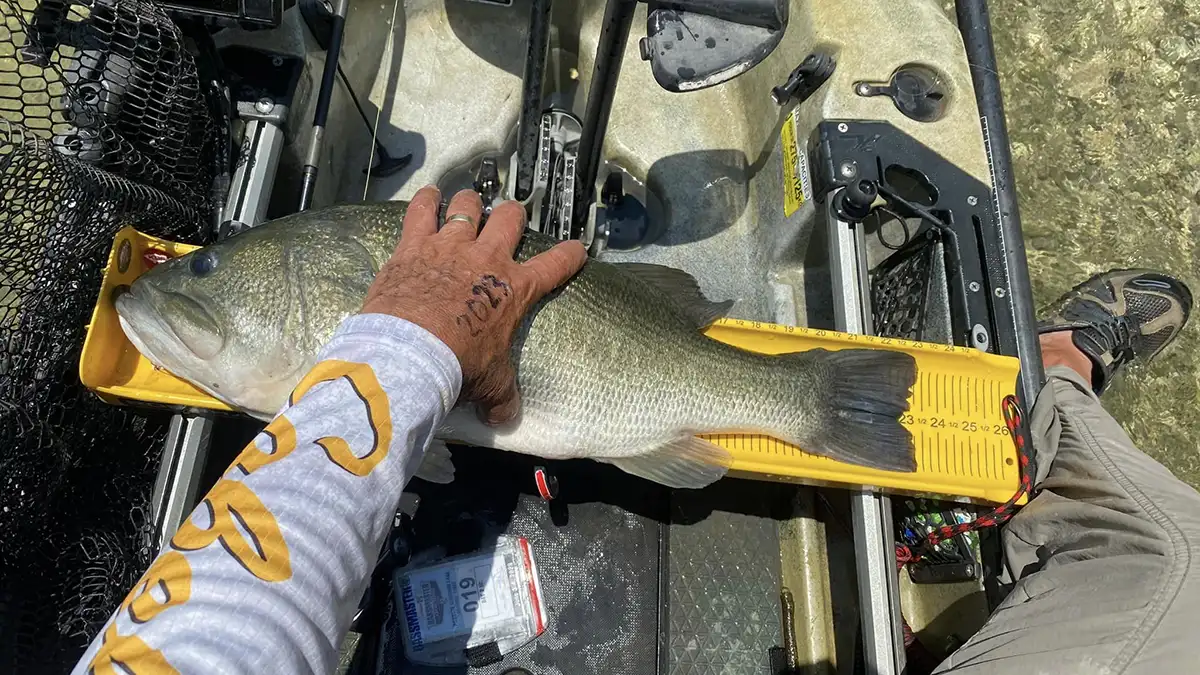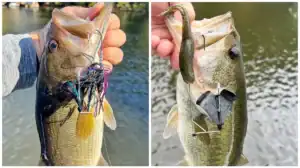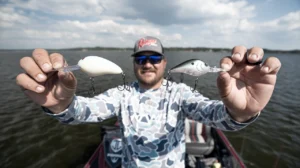Dive too deep into fishing social media, especially a topic that’s important to you, and you can be fed the most unhinged opinions by the Powers That Be and its algorithm. Shout out to you, Mark Zuckerberg!
But sometimes a suggestion from social media is an absolute home run. That’s what I found with Mighty River Recovery, a fishing-focused nonprofit fighting to end the decline of Florida’s St. Johns River. The former bass fishing haven has seen major declines in recent years, partly from water quality degradation and loss of fish habitat like eel grass. More on that organization later.
The reason I was searching the internet was because one of my local bass spots was completely bombed by aquatic spraying of herbicides. The lush vegetation that bass love was a crippled brown color, decaying and sinking, with an obvious film puddling all across the surface. On that day, I didn’t see any dead fish floating, but there sure weren’t any fish hanging around.
I don’t know who sprayed the area, but the results were obvious. I was absolutely pissed. Exploring the internet, I came across countless social media posts by angry bass anglers photographing and recording flat-bottom boats, air boats, and even helicopters spraying their favorite Sunshine State waters. Many times, the spraying was at the behest of the Florida Fish and Wildlife Conservation Commission (FWC), St. Johns River Water Management District, or Army Corps of Engineers to combat invasive plants such as hydrilla and water hyacinth.
The Major Downsides of Aquatic Spraying
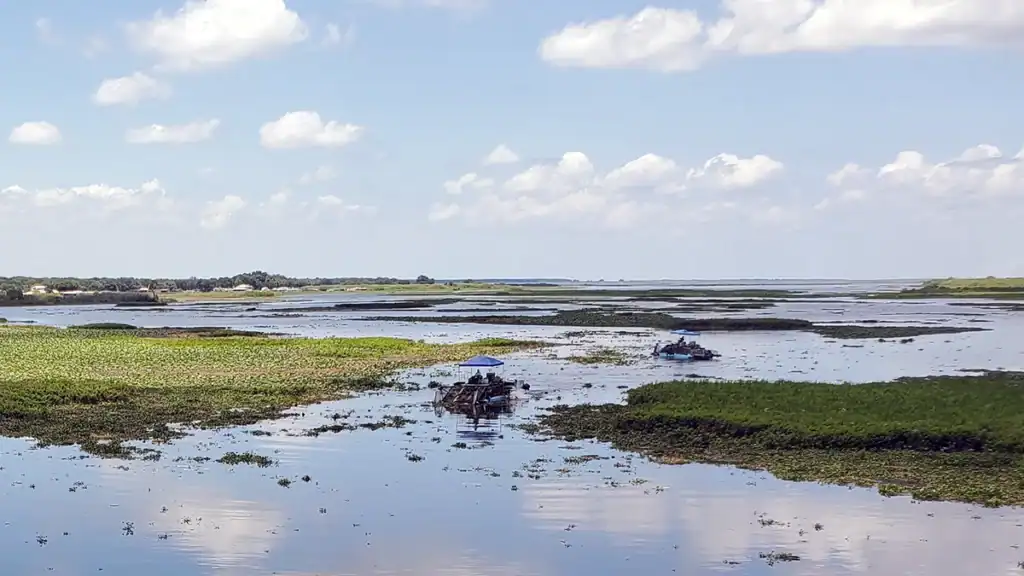
No one is arguing that Florida’s waterways aren’t ripe with nutrients, additionally gifted with a year-long growing season. Plus, many invasive grasses, weeds and other aquatic vegetation have made their way into the state’s waters in what can only be described as a completely failed system to block out the migration of exotics. And if you’ve fished some of Florida’s favorite bass fisheries — such as Lake Toho near Kissimmee — you know just how thick Florida weeds get during warmer months.
But there must be a better way to manage waterways than spraying all of Florida’s favorite fisheries with cocktails of chemicals that supposedly have no effect on water quality, native plants, fish, or watermen themselves. If you’ve ever seen folks spraying herbicides, they’re always covered with a mask, sometimes head to toe with even more protective gear. Personally, I believe this moment will be remembered as a historical mistake, similar to DDT, asbestos, and lead-based paint.
Spraying is not a one-time thing, so schedules of spraying different ponds, lakes or rivers can occur relatively frequently. The U.S. Army Corps of Engineers, on its Jacksonville website, highlights treatments for floating plants are conducted with 2,4-D, Diquat, Carfentrazone, Glyphosate, Imazamox, Penoxsulam, Triclopyr, or Flumioxazin.
The Corps warns that waters “spot treated with Diquat should not be used for 1 day for drinking water, livestock and domestic animal watering or irrigation of non-food crops and 5 days for food crops. There are no restrictions for Glyphosate treated areas except for a 48-hour waiting period within 0.5 mile of an active potable water intake (drinking water).”
Sounds rather harmful to this layman’s ears.
Completely side-stepping what’s in these herbicidal sprays — and I admit that’s a huge step the state and various environmental protection agencies shouldn’t be taking — there’s another major concern when it comes to spraying. And this one is not controversial, it’s science.
A Muck Problem
If you’ve followed along with the decline of Florida’s Lake Okeechobee over the last couple decades, one of the major catastrophes that doesn’t have any answers currently is the muck.
What is Lake Okeechobee muck? Well, it’s decomposing organic lake bottom a couple feet deep or more that doesn’t grow aquatic plants but definitely increases water turbidity. Often, it’s loaded with chemicals and nutrients such as nitrogen and phosphorus commonly found in fertilizer or human waste. Okeechobee’s muck bottom causes algae blooms on a yearly basis.
Many anglers are worried that spraying waterways are causing the same muck problems plaguing Lake Okeechobee and other large Florida lakes such as Apopka. A little bit of muck in Florida lakes is essential for aquatic invertebrates such as insect larvae, worms, and snails, but the level of muck in all too many Florida lakes is catastrophic.
When plants are sprayed, they aren’t removed from the water. Instead, they die, eventually sink to the bottom, and decay. Through this process, bacteria and microorganisms break down the organic matter, consuming large amounts of dissolved oxygen. That translates to a lack of oxygen for fish to breathe and eventually fish kills, especially in warm water or low light periods. Decaying plant matter can also fuel rapid growth of algae, leading to algal blooms. When that algae dies, its decomposition also sucks oxygen from the water. Guess what? Yes, more fish kills.
So What’s the Answer?
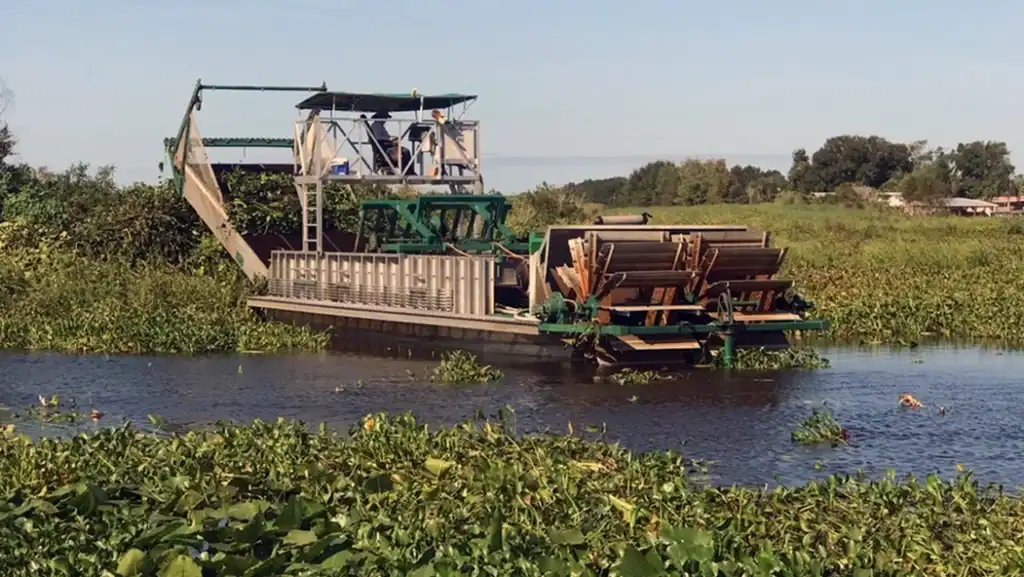
Back to the Mighty River Recovery (MRR) group. I’ll point out that sponsors such as Mud Hole Custom Tackle, Bass Pro Shops, and Cabela’s Outdoor Fund have already jumped onboard to support the organization. Recently, MRR tested different areas throughout the St. Johns River for Glyphosate and Diquat at Citizen Enclosure Project (CEP) sites.
“These sediment samples are headed to Microbac Laboratories in California, where they will be tested,” said the group. “Both chemicals are hazardous to aquatic organisms, used regularly in St. Johns River herbicide treatments and known to accumulate in the environment. Yet no other organization or government agency is testing for them. We find that concerning, so we’re doing it ourselves.”
Their goal is to restore one of Florida’s most famous fisheries back to its old glory. It’s absolutely imperative to dive into the potential negative effects of Florida’s systematic spraying. Anglers know they can’t rely on the state to police themselves.
And what about the decaying plants after the spraying? The answer may lie in mechanical harvesting. Think of a mechanical harvester as a giant floating lawnmower that cuts and removes vegetation from a lake. These barges come in different sizes, with different capabilities. In fact, the FWC already utilizes mechanical harvesting in some instances. But not all harvesters are equal, with some way more effective and less intrusive than others.
To be completely blunt, why shouldn’t the state consider stopping spraying almost entirely? Removing the plants out of the waterways, plus stopping the need to inject chemicals into the waterways, solves the majority of problems that accompany spraying. And while mechanical harvesting might require a lake to be cleared of weeds more often, it’s a tradeoff I bet most bass anglers would take.
Scale up if more capacity is needed. Allocate any funds for spraying and direct them toward harvesting. Have dedicated harvesters for all the major lakes ready to deploy. We can even give them sponsor wraps like bass boats or monster trucks, with names such as Swamp Monster, Green Machine or Weed Wrecker. (I’m only half joking — but the marketing could be clever!) The dramatic change would be welcome by just about any fishermen, hunter, boater, or lakeside homeowner.
Heck, some bass anglers might vote to keep more invasive hydrilla around in moderation, mostly because of its benefit as great fish habitat and natural water filtration. But that’s a completely different conversation: When does an invasive species become naturalized? No matter what, if you listen to the chatter at the local tackle shop or boat ramp, a common fallout that anglers see in their local lakes after getting sprayed is that it turns into a murky mess. And Florida’s bass anglers are tired of seeing their favorite fisheries turn into mud.
